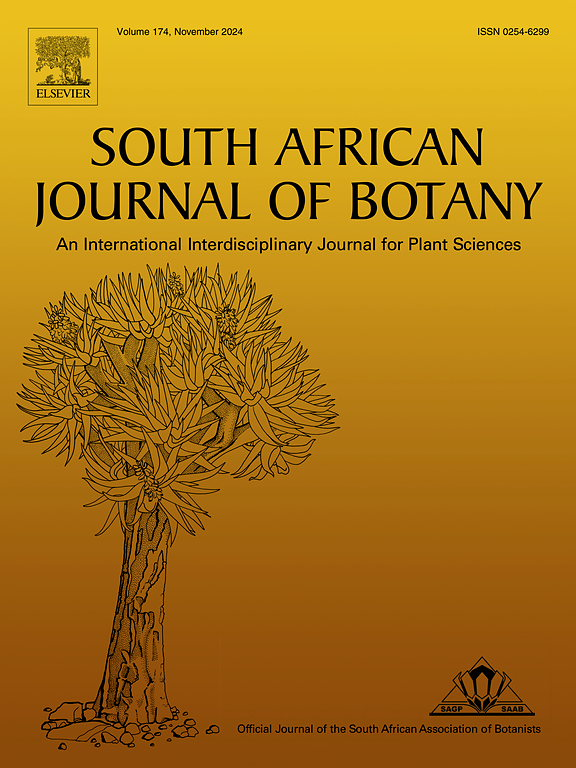Avocado fruit peel and flesh as antioxidant and anti-inflammatory agents: A comparative phytochemical and in vitro study
IF 2.7
3区 生物学
Q2 PLANT SCIENCES
引用次数: 0
Abstract
Avocado, (Persea americana, Mill) fruit is considered a super food, it comprises a plenty of phytonutrients that have a significant impact on human health. Flesh (pulp) is the primary form in which the fruit is consumed. However, valorizing the fruit peels as a medicinal agent due to its diverse biological activities is gaining more scientific interest. The present study aims to compare the fruit peel and flesh with respect to their antioxidant and anti-inflammatory activities and correlate these activities to their chemical constituents.
Methods
The peel and flesh of avocado fruit were separately extracted with 80 % ethanol to get the total ethanol extract (TEEp &TEEf). Part of both extracts were separately fractionated with dichloromethane to get non-polar fraction (NPF) and polar fraction (PF). The TEEp and TEEf were screened for their in vitro antioxidant activity (DPPH, ABTS, ORAC, FRAP, metal chelation) and anti-inflammatory activity via LPS induced inflammation in macrophage RAW 264 cells. A part of the polar fraction of the peel was fractionated on a Diaion HP-20 column. The unsaponifiable and saponifiable matters (USF and SF) of the non-polar fraction (NPF) of the flesh & peel were prepared and subjected to GC/MS analysis. The major flavonoids were isolated from the 50 % MeOH fraction of the peel.
Results
The TEEp exhibited a significant in vitro antioxidant activity higher than that of the flesh (Peel: DPPH:71.68, ABTS:391.9, ORAC:1442.2 TE/mg extract, FRAP:72.7, Metal chelation:279.83 µM EDTA Eq. /mg extract,) (Flesh: DPPH:18.20, ABTS:144.89, ORAC:1249.92 TE/mg extract, Metal chelation:108.64 µM EDTA Eq. /mg extract), while the TEEf showed a higher in vitro anti-inflammatory activity as NO inhibitor (80.81 %). Additionally, the active 50 % MeOH fraction of the Diaion column showed a higher antioxidant activity than its 100 % fraction. GC/MS analysis resulted in the identification of 36 (flesh) & 25(peel) compounds in the unsaponifiable fraction (USF) and 13 (flesh) & 9 (peel) compounds in the saponifiable fraction (SF). The isolated flavonoids from the 50 % MeOH fraction were identified as rutin, quercitrin, isoquercitrin, kaemperol-3-O- glucoside, quercetin and luteolin.
Conclusion
it is recommended to use both parts of P. americana fruit (flesh and peels) in diets and salads due to their noticeable antioxidant and anti-inflammatory properties.
求助全文
约1分钟内获得全文
求助全文
来源期刊

South African Journal of Botany
生物-植物科学
CiteScore
5.20
自引率
9.70%
发文量
709
审稿时长
61 days
期刊介绍:
The South African Journal of Botany publishes original papers that deal with the classification, biodiversity, morphology, physiology, molecular biology, ecology, biotechnology, ethnobotany and other botanically related aspects of species that are of importance to southern Africa. Manuscripts dealing with significant new findings on other species of the world and general botanical principles will also be considered and are encouraged.
 求助内容:
求助内容: 应助结果提醒方式:
应助结果提醒方式:


